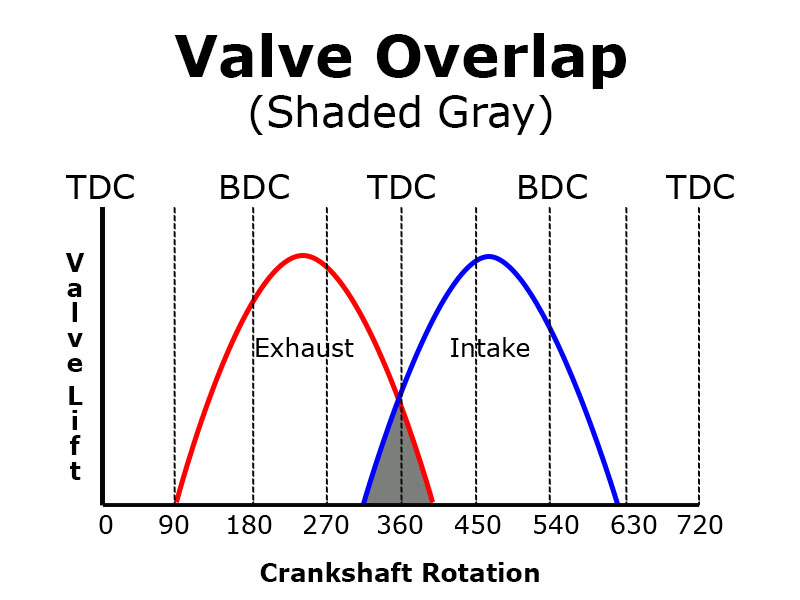Q: What is valve overlap?
…
A: Overlap is when the intake and exhaust valves are open at the same time. It is expressed in degrees of crankshaft rotation.
Not all camshafts have overlap. If they do, it happens at the end of the exhaust stroke and the beginning of the intake stroke. (Hint: If your intake valve opens before TDC and/or your exhaust valve closes after TDC, you may have overlap.)

How is it measured?
Overlap is not usually listed on the cam card. However, it is easy to calculate if you know the opening and closing points of the valves. The formula is:
Exhaust Closing Point + Intake Opening Point = Overlap
For example, this camshaft has the following opening and closing points:
| Opens | Closes | |
| Intake | 13° BTDC | 51° ABDC |
| Exhaust | 66° BBDC | 8° ATDC |
The exhaust valve closes AFTER TDC, but the intake valve opens BEFORE TDC. In this example, there will be overlap.
8° + 13° = 21° of overlap
Keep in mind the opening and closing events are listed at 0.050 in. of valve lift. So, the calculated overlap is at 0.050 in. True overlap will be slightly more.
Can I adjust the amount of overlap?
You can’t adjust the overlap on your camshaft. You will need a new cam. For more overlap, you need more duration and/or less lobe separation. For less overlap, you need less duration and/or more lobe separation.
How does it affect performance?
At high rpm, overlap takes advantage of the scavenging effect. However, at idle and low rpm, overlap will produce low vacuum and a rough idle. This is great for a race car, but not so much for other vehicles.
Any camshaft with a significant amount of overlap is not recommended for street-driven cars. The engine will have poor low-end power. Low vacuum also makes for a very hard brake pedal. Overlap also contributes to exhaust reversion, which isn’t good.
…

On a solid lifter camshaft you can alter the duration and overlap slightly by tightening or loosening the valve lash.
VERY GOOD INFORMATION
CONGRATULATIONS